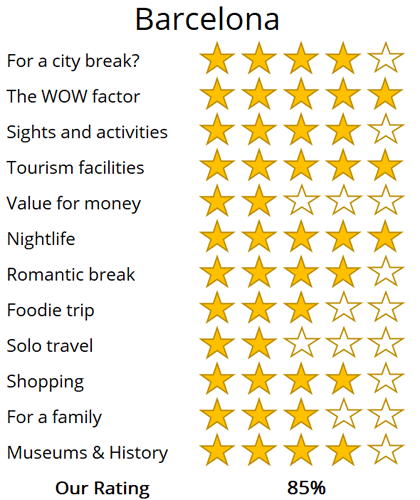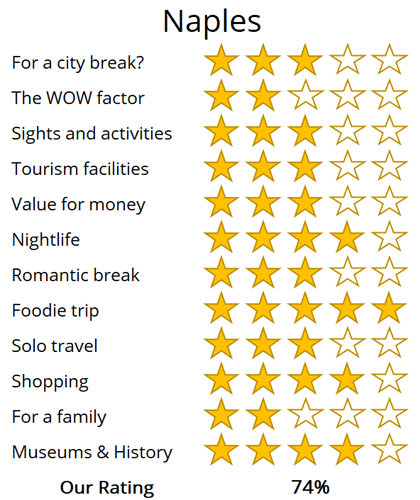WhereToGoForMyHoliday.com
The best destination comparison site!
WhereToGoForMyHoliday.com
The best destination comparison site!
Naples or Barcelona, which is better for your holiday in 2024?
Barcelona and Naples both offer unique and enticing experiences, but which one should you choose for your city break or holiday?
We understand your dilemma. There is an abundance of travel guides for both cities, but few actually comparing them, and advising you which is the better for your trip.
This article will provide our unbiased and independent views of Barcelona and Naples, hopefully making your choice that little easier.
The article is structured into several sections, each of which can be directly accessed through the following links:
• Introduction to the cities
• Scores and ratings
• Which one should I, friends, or family visit?
• When to visit and weather
• Who is the city suited for?
• The perfect 48hours (with map)
• Tourism details (where to stay? airport details?)
Introduction to Barcelona and Naples
Barcelona, the pulsating core of Catalonia, exudes a robust and confident identity that's uniquely its own. As a city that's simultaneously youthful, chic, and forward-thinking, it captures the imagination with awe-inspiring landmarks and vibrant culture.
Nestled between the sparkling sea and towering mountains, Barcelona's dynamic and vivacious character thrives. Yet, the ease with which one can retreat to sun-kissed beaches or the rejuvenating mountain landscapes ensures the city never feels confining.
While Barcelona stands as a premier European destination, it's not without its challenges, such as the impact of heavy tourism and sometimes indifferent service. However, for those willing to navigate these aspects, the city's allure is undeniable, offering a blend of cultural richness and natural beauty that continues to enchant visitors from around the world

The Spaccanapoli cuts Naples in two and transitions from the old to modern sides of the city
In many ways, Naples is split in two halves; a town of shadow and light.
There's the Naples of pizza dough and La Dolce Vita, which is all about kicking it by the azure Tyrrhenian Sea with good food and great wine.
Then there's the gritty city, whose reputation comes from the Camorra mafiosos and the ramshackle alleys around Spaccanapoli street. Both are immersive and interesting in their own right
Put simply, Naples is one of the most authentic and enthralling cities in Italy. The self-proclaimed capital of the south, it's got Roman history and gorgeous landscapes in equal measure.
It promises something for honeymooners, backpackers, foodies, and outdoorsy types, but won't sugar-coat the experience with anything special for tourists.

The harbour front in Naples
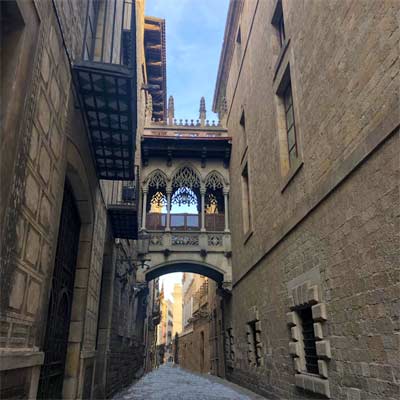
The Barri Gòtic (Gothic Quarter) is one of the most atmospheric areas of Barcelona
Naples vs Barcelona: City Ratings
Summary
Where would I journey for a personal escape?
Barcelona
Where would I send my parents for a memorable visit?
Barcelona
Where's the ideal destination for my adventurous 19-year-old cousin?
Barcelona
Where should my food-obsessed friend indulge their culinary passions?
Barcelona
Note: The above comparisons are weather-independent and are based on travel during the most opportune times of the year. Details about the ideal travel seasons are elaborated upon later in this article.
In the sections that follow, you'll find a comprehensive comparison between these two fascinating cities. This includes recommendations on the duration of stay, the best times to visit, and tailored 48-hour itineraries for each city.
The final segment delves into practicalities for your travels, such as the best airport to fly into, the optimal districts for your accommodation, and insider tips, for when you come to explore the city.
We hope that you find all of this information useful, in planning your next exciting trip!
Destination details
How long to spend each city?
Barcelona can be fully seen with two intense days of sightseeing, but if you include the beaches, the mountain viewpoints and a more leisurely pace, this leads to the conventional four-day visit.
A trip could be extended by visiting the picturesque Montserrat Monastery and mountains or the attractive coastal town of Sitges. Barcelona is much more suited for a short city break than a longer holiday, and does lack the diversity of day trips as with other destinations.
That's a tricky one. Naples itself can be seen from tip to toe in just a couple of days. We'd say around 48 hours is perfect for tasting Neapolitan pizzas in legendary L'Antica Pizzeria da Michele and feeling the vibes down lively Spaccanapoli – the main drag in the historic centre.
For a longer stay of five to seven days, there's a catch: A lot of Naples's main draws are outside of town. Think the likes of Pompeii, the soaring crater of Vesuvius, and the Amalfi Coast. To add those on, you'll need to plan to come here for considerably more time.

The flamboyant Park Guell, colourful mosaics and whimsical buildings all designed by Barcelona great designer Antoni Gaudí
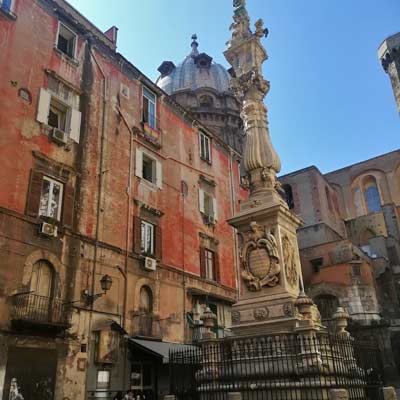
The obelisk of San Gennaro in the Piazza Riario Sforza
Spring is the best time of year in Naples. This southern city gets warm nice and early, so you can expect April highs in the 20s and even enough sun to hit the beaches of Gaiola and the local lidos if you want to take a dip in the Med. There are fewer other travellers about before the summer rush too, which means you'll find it more pleasant strolling the historic centre and Pompeii.
Of course, that's not to say the summer is bad in these parts. It most certainly isn't. Reliable warmth and loads of sunshine, topped off with a buzz about town, help make the months between June and August great options. Just be prepared to pay extra for hotels and flights, and don't expect the city to be quiet.
Barcelona is almost a year-round destination, and the best time of year to visit is either early spring or later autumn as this is outside of the peak season, but the weather is still pleasant.
The peak tourist season is July and August, and we suggest Barcelona is best avoided, as it is just too hectic and crowded. The weather is suitable for spending time on the beaches from May until October. The winter months are cooler and possibly wet but there is a less hectic pace around the city.
Barcelona is flashy, energetic and modern. The city has vibrant tourist attractions, without the stuffy atmosphere of many other historic destinations. It generally appeals more to the younger visitor with its heady mix of nightlife, beaches and Instagram ready tourist attractions.
It should be noted that Barcelona is not a cheap city, being the most expensive city in Spain. Barcelona is great for a short stay or a one-day visit, such as from a cruise ship.
Naples is a raw and immersive Italian city. It's got pizza places that are frequented by locals. It's got wine bars serving gorgeous Campanian tipples. It's lived-in and gritty and real. That makes it perfect for city hoppers who like atmosphere and energy. And the joys don't end there…
Just around the Bay of Naples are two of the country's most impressive archaeological sites: Pompeii and Herculaneum. They'll entertain the history lovers, along with the likes of the Castel dell'Ovo and the vast Museo Archeologico Nazionale. Loved-up duos might also want to make Naples a pitstop on a couple's break to the impossibly gorgeous Amalfi Coast that lies to the south.
Naples isn't for those who like small, easy-going towns where there's lots of room. It's crammed between the volcanos and the sea, so things are compact in the centre. It can also be quite hectic, with touts and traffic.
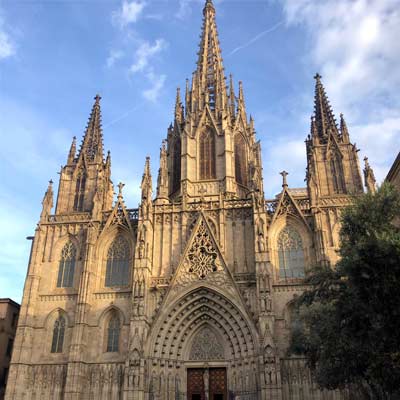
The cathedral of Barcelona is dedicated to Saint Eulalia, and in the adjoining cloister are the 13 white geese commemorating her young martyr death at 13
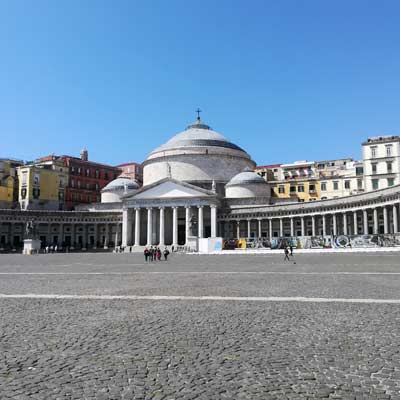
The Piazza Plebiscito is the grand square of Naples
Barcelona
Barcelona is a tremendous destination for a 48-hours, and excels as a short-stay destination. Below is an interactive map for 48 hours in Barcelona; day 1 is highlighted in green and day 2 in yellow, with optional sights marked grey.
The first morning would start on the La Rambla the authentic shopping street, which is so popular with tourists and locals alike. For the middle of the day explore the Gothic Quarter, which contains the cathedral and Picasso museum.
For the final part of the head towards the harbour and the lively Barceloneta district, that lies the beaches. For the evening both Gothic Quarter or Barceloneta boasts restaurants, atmosphere and entertainment.

The cable car up to Montjuïc Castle provides wonderful views over Barcelona
For the second day begin by visiting the awe-inspiring Sagrada Familia basilica, with is whimsical towers, intricate carvings and masterpiece of Antoni Gaudí. The theme of Gaudí continues with the next sight, the Parc Guell, which was designed by him and includes delightful mosaic-covered buildings and wonderful views of the city.
The final area to discover is Montjuï, where you can ride the cable car to a stunning or visit the MNAC museum housed in the grand Palau Nacional.
The finale for your time in Barcelona is the inspiring Magic Fountain light show, held at the fountain near the MNAC museum (Wed-Sun peak season).

Did we mention Barcelona has beaches, and that they are amazing!
Everything from millennia-old villas to rich art collections is on offer in this 48-hour guide to Naples. Oh, and there are plenty of chances to devour pizza – it's considered the very best in Italy.
Day 1: Start in the Quartieri Spagnoli. Ramshackle and rough around the edges, it's the perfect combo of Neapolitan grit and charm. There's bound to be a cafeteria serving cannoli (crunchy Sicilian pastries) and cappuccino there that takes your fancy.
You'll need the energy, because your next destination is the acclaimed Naples National Archaeological Museum. It's known to have one of the largest collections of Roman artifacts anywhere in the world, but the standout highlight is surely the Alexander Mosaic, reconstructed from the floors of Pompeii's opulent House of the Faun.
Once you're done in there, head south to the sleepless street of Spaccanapoli. Literally meaning 'the street that divides Naples', it does exactly as that implies. It runs right through the heart of the city, with drooping washing lines, street-food vendors and age-old churches looming on both sides. It will take a while to walk its two kilometres but it's all about breathing in the urban energy. What's more, the iconic L'Antica Pizzeria da Michele sits at the eastern end.
You'll be rewarded there by one of the best pizzas in town – choose between marinara (just fresh tomato passata and garlic) and bufalina (with buffalo mozzarella). After lunch, make for the port area.
That's crowned by the turrets of the Castel Nuovo, a grand fortification that has a history of more than 800 years. Behind that comes vast Piazza del Plebiscito. Prepare to be stunned by its sheer size and grand horse statues. For evening, a few cocktails and some tasty homecooked pasta awaits in the osterias of stylish Chiaia district.
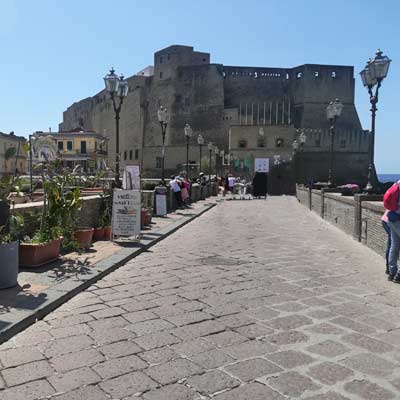
The Castel dell'Ovo (Egg castle) on the harbour front of Naples
Day 2: Rise early and get to the platforms of Naples Centrale station. That's where the trains depart for Pompeii in the morning. You might just have heard of that place – it was once an entire Roman resort town for the nobles and elite of the empire.
That is, until Mount Vesuvius suddenly erupted in 79 AD and flooded it with lava and ash. These days, the site is an amazing and haunting archaeological dig, with whole streets, entire villas, and even brothels complete with Roman wall art just waiting to be discovered.
It's likely Pompeii will take more than half of the day, while the most devoted history buffs can add on a trip to Herculaneum to boot. If not, head back to Naples city and go straight to the hilltops where the Castle of St Elmo keeps watch. That's the Vomero district, and it's famed for its sweeping panoramas of the Gulf of Naples and Mount Vesuvius. With that as the backdrop, find yourself a traditional trattoria or pizzeria and dine with a view of the metropolis to cap off the trip.

Pompeii was covered in 6m of volcanic ash when Mount Vesuvius erupted in AD 79
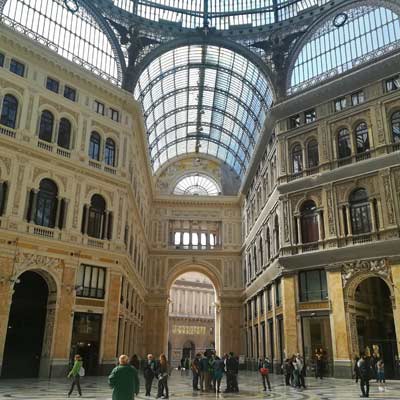
The elegant Galleria Umberto I shopping gallery in Naples
If you can find decent accommodation, then Barcelona is enjoyable for a city break. The main airport of Barcelona is 17km from the city centre and connected by train, but the low-cost airlines may use the very distant Barcelona-Reus (110km south) or Barcelona-Girona (90km north). Neither airport is good for a short city-break, as so much time will be waste travelling.
Accommodation for Barcelona is always in high demand, and you will typically end up paying much more than you originally planned before making any reservations. The summer months can be a real challenge to find good accommodation – book well in advance.

The Sagrada Família is the standout attraction of Barcelona
Once in Barcelona all of the main sights are close and can be easily walked. The standard of food and service at restaurants in the tourist areas varies dramatically, it’s always advisable to check reviews first.
Capodichino Airport, or Naples Airport, is the main gateway to the city by air. It's the fifth largest in the country, so should have lots of low-cost and premium services jetting into its runways. There's a metro line to the terminal in the works, but for now arrivals will need to use the Alibus to Naples Centrale station. Tickets cost about €5 each way and the travel time is roughly 15 minutes outside of rush hours.
Centrale Station is a main stop on the north-south railway line through Italy. It's easy to get there on high-speed links from Rome and even Milan. That's one of the most glamourous ways to arrive in Campania, offering gorgeous views of the countryside before pulling right into the heart of the city.
When it comes to booking hotels in Naples, take some time to consider each neighbourhood one by one. Most travellers are drawn to the Historic Centre (or Centro Storico in local speak). That's the home of the Duomo and the buzzing lane of Spaccanapoli.
It's probably one of the pricier and more lively areas to stay. Alternatively, go to Vomero for boutique B&Bs with great views, not to mention proximity to some of the coolest hipster eateries and cafes. Or, choose the down-to-earth Quartieri Spagnoli, which is filled with hostels and guesthouses that shouldn't break the bank.
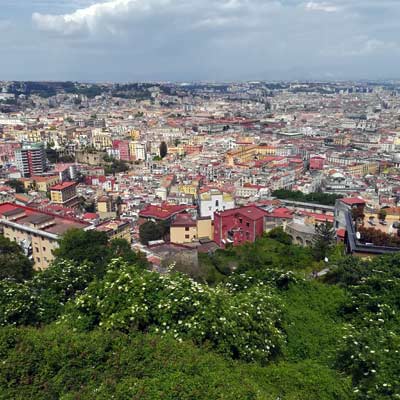
The view over Naples from the surrounding hills
Naples has a reputation for being Italy's roughest and most dangerous place.
It's true that crime rates are higher here than in the north. What's more, the mafia are still in action in these parts. You'll want to be a little more careful walking around areas like the Naples Centrale station and Quartieri Spagnoli.
Also try to stick to more touristy central districts, and don't walk alone at night. On top of that, be wary of street touts selling stolen goods, and be on the guard for pickpockets and drive-by thieves on scooters.

oh we were stuck in the airport!

Copenhagen was a bit expensive...

All we did was drink beer in Brussels...

Muncih was crazy

And we got so burnt!

Remeber that night in Rome

oh we were stuck in the airport

So much fun kayaking

Berlin and that group from Austria!

There was such a view from that church

And we got so burnt!

Munich was eventful, wasn't it!

Such a view from that cathedral in Florence

Lisbon was such so much fun

Last summer was so much fun .... x

Remeber that night in Rome

Lisbon was such so much fun

Such a view from that cathedral in Florence

Munich was eventful, wasn't it!

And we got so burnt!

Remeber that night in Rome

All we did was drink beer in Brussels...

Berlin and that group from Austria!

Can't wait to go back to Dubrovnik

Remember that boat ride in Prague

Copenhagen was a bit expensive...
